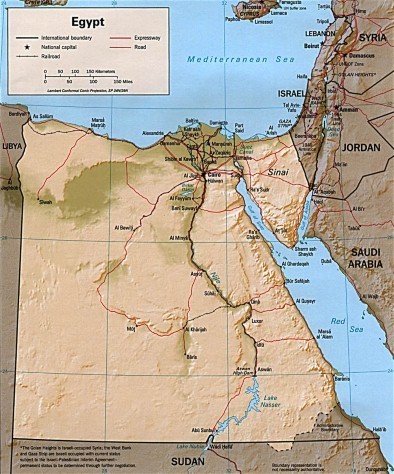The majority of the country area is desert land. Most of the cultivated land is located close to the banks of the Nile River, its main branches and canals, and in the Nile Delta. Hot dry summers and mild winters characterise Egypt’s climate. Rainfall is very low, irregular and unpredictable.
Egypt’s natural resources are petroleum, natural gas, iron ore, phosphates, manganese, limestone, gypsum, talc, asbestos, lead, rare earth elements, zinc.
Key Water Issues and Challenges
- Periodic droughts
- Agricultural land being lost to urbanization and windblown sands
- Increasing soil salination below Aswan High Dam
- Desertification
- Oil pollution threatening coral reefs, beaches, and marine habitats
- Other water pollution from agricultural pesticides, raw sewage, and industrial effluents
- Limited natural freshwater resources away from the Nile, which is the only perennial water source
- Rapid growth in population overstraining the Nile and natural resources
Contact
Dr. Raouf Darwish
GWP Regional Steering Committee Member
Chair of Egypt Country Water Partnership
Email: raoufdarwish@gmail.com
More information
AQUASTAT -FAO's Information System on Water and Agriculturehttp://www.fao.org/nr/water/aquastat/main/index.stm
UN-Water Statistics http://www.unwater.org/statistics_KWIP.html
